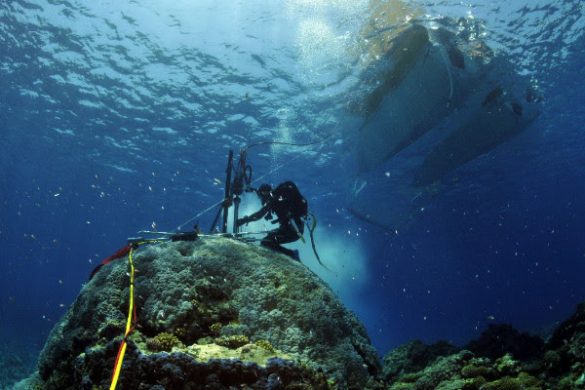Det fremgår af en pressemeddelelse fra forskningsinitiativet for en bæredygtig verden, Future Earth:
Around 1830, just decades after the start of the Industrial Revolution, something happened around the world:
As factories fueled by coal power spread across much of Great Britain, humans began to change the chemistry of the atmosphere, adding carbon dioxide to the air in small but increasing amounts.
Not long after, the planet’s oceans started to warm up, kicking off a trend that continues today.
That’s the message of a new study by a team of international scientists who set out to answer a fundamental question:
When did manmade climate change begin?
Drawing on a roughly 500-year history of temperatures in the oceans and on land, the group concluded that the warming of the planet may have started early in the 1800s – and much earlier than typical climate change graphs depict.
Climate system able to respond quckly
The results show that even small amounts of carbon dioxide may be able to shift how fast the planet is warming, with both positive and negative repercussions.
“It tells us that our climate system is able to respond relatively quickly to greenhouse gases, at least in some areas,” says Nerilie Abram, an Associate Professor of Earth Sciences at the Australian National University in Canberra and lead author of the new paper.
“Maybe we can also flip that around to ask: if we can reduce greenhouse gas emissions, are there some areas where we could see quick paybacks?”
The study was an effort of the 2k Network of PAGES (Past Global Changes), a research project of Future Earth investigating global paleo changes.
Not just for the history books
The question of when warming began isn’t just one for the history books. To know how much humans have altered the climate, you have to know when to start measuring, Abram says.
Researchers with PAGES had previously pieced together a reconstruction of past temperatures over the globe’s land surfaces using records from tree rings and other sources.
But the oceans are critical to the planet’s climate: They stretch over 70% of the globe and, according to scientists, have absorbed nearly 90% of the warming caused by climate change in recent decades.
To recreate how the temperature of the oceans had changed over hundreds of years, the team drew on data from two sources: microscopic organisms that swam at the oceans’ surface then died and became buried on the sea floor. And corals. Abram explains that like trees, corals grow in predictable ways:
“Corals are a lot like the trees of the ocean,” she says.
“Every year they grow, there’s a growth ring. We can look at the chemistry of that ring, and that tells us about the temperature of the oceans.”
Temperature timeline of the ocean
By bringing together those sources, Abram’s team was able to reconstruct a temperature timeline of the oceans. That timeline covers most of the planet’s oceans from the seas surrounding Greenland and Antarctica to the tropics.
Based on those results, the oceans seemed to have begun a steady uptick in temperature around the time that Queen Victoria came into power in Britain. Not that anyone standing at one of the country’s industrial ports would have noticed.
“Somebody living in the 1830s or even the 1890s would not have been able to distinguish that there was this change afoot,” she says.
“It’s by having this long record now that extends almost 200 years from that point that we can go back and say ‘Well, this was when the changes first started.’”
But just because the oceans were warming doesn’t mean that the culprit was the carbon dioxide billowing from newly-constructed factories. To make that extra connection, Abram and her colleagues turned to computer simulations, or models.
Up until the early 19th Century, the planet had been in a cool period, explains Nicholas McKay. He is an Assistant Professor in Earth Sciences and Environmental Sustainability at Northern Arizona University and one of the authors of the study.
That relatively chilly era was due to a series of volcanic eruptions, such as a massive blast from Mount Tambora in what is now Indonesia in 1815, that spewed huge clouds of ash into the atmosphere.
Theoretically, the increase in ocean temperatures around 1830 could have been the result of the climate recovering after volcanoes around the world had gone quiet again.
“If you run the models with only volcanos and no increases in greenhouse gases, you see a warming, starting in the early 1800s”, McKay says. “But then it levels off, and you don’t see that warming continue through the 20th Century.”
When the researchers ran those models with an increase in greenhouse gas levels, however, the globe started warming around 1830 and didn’t stop – much like what the team saw in the coral records.
Small reductions can slow down speed of change
Still, like Abram, McKay says that the study isn’t doom and gloom. Small reductions in greenhouse gas emissions won’t stop the planet from heating up, he says, but they could slow down the speed of that change.
“In some ways, it’s a really positive message because it suggests that the climate system can respond really quickly to relatively small changes in greenhouse gases,” McKay says.
“It means that our actions as a society, both positive and negative, can result in an immediate impact.”















